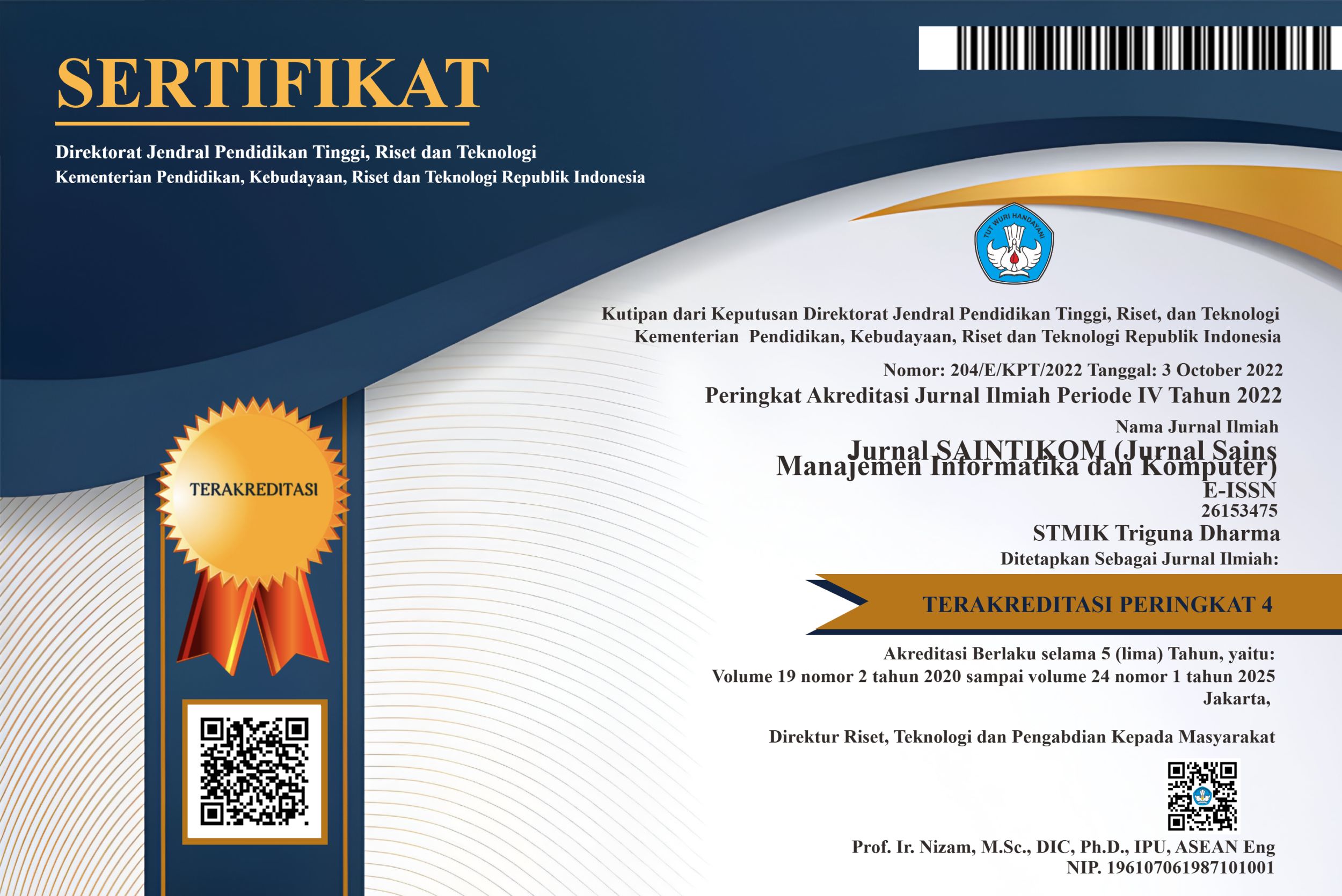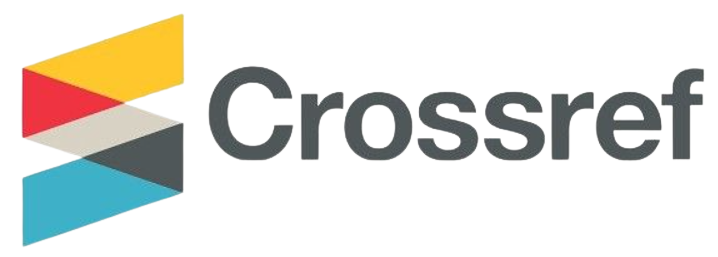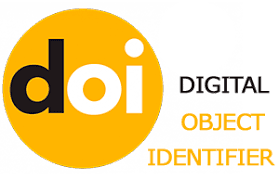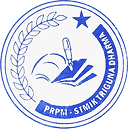The Role of Information and Communication Technology in Interactive Learning
DOI:
https://doi.org/10.53513/jis.v23i1.9549Abstract
This article is the result of an in-depth literature review on the role of Information and Communication Technology (ICT) in the context of interactive learning. Education has undergone a significant transformation with the adoption of ICT, transforming the traditional way of learning into a more dynamic and participatory learning experience. The purpose of this literature review is to analyse the positive impact of ICT in shaping interactive learning environments, explore the use of multimedia in the learning process, and identify the challenges and opportunities associated with the application of ICT in education. This literature review describes the transformation of learning through ICT, explaining the paradigm shift from conventional approaches to more adaptive and collaborative interactive learning. The results of this literature review illustrate how important the role of ICT is in shaping the future of education that is more interactive, inclusive and relevant to the demands of the times. Through collaboration between educational institutions, government, and the technology industry, as well as a careful pedagogical approach, ICT can be a catalyst to optimise the learning process and empower students to face the complexities of the modern world.References
R. Fariz and N. R. Dewi, “Kajian Teori: Pengembangan Media Pembelajaran Interaktif Berbantuan Articulate Storyline 3 Pada Model Preprospec Berbantuan TIK untuk Meningkatkan Kemampuan Pemecahan Masalah Matematis,†PRISMA, Prosiding Seminar Nasional Matematika, vol. 5, pp. 304–310, 2022, [Online]. Available: https://journal.unnes.ac.id/sju/index.php/prisma/
T. Solihudin JH, “PENGEMBANGAN E-MODUL BERBASIS WEB UNTUK MENINGKATKAN PENCAPAIAN KOMPETENSI PENGETAHUAN FISIKA PADA MATERI LISTRIK STATIS DAN DINAMIS SMA,†WaPFi (Wahana Pendidikan Fisika), vol. 3, no. 2, p. 51, Sep. 2018, doi: 10.17509/wapfi.v3i2.13731.
P. Triggs and P. John, “From transaction to transformation: information and communication technology, professional development and the formation of communities of practice,†J Comput Assist Learn, vol. 20, no. 6, pp. 426–439, Nov. 2004, doi: 10.1111/j.1365-2729.2004.00101.x.
F. Ilyasir, “Pendidikan demokratis di era revolusi industri 4.0,†Jurnal Pembangunan Pendidikan: Fondasi dan Aplikasi, vol. 7, no. 1, pp. 60–69, Feb. 2020, doi: 10.21831/jppfa.v7i1.25998.
L. Latifah and N. Ngalimun, “PEMULIHAN PENDIDIKAN PASCA PANDEMI MELALUI TRANSFORMASI DIGITAL DENGAN PENDEKATAN MANAJEMEN PENDIDIKAN ISLAM DI ERA SOCIETY 5.0,†Jurnal Terapung : Ilmu - Ilmu Sosial, vol. 5, no. 1, p. 41, Mar. 2023, doi: 10.31602/jt.v5i1.10576.
H. B. Danesh, “Towards an integrative theory of peace education,†Journal of Peace Education, vol. 3, no. 1, pp. 55–78, Mar. 2006, doi: 10.1080/17400200500532151.
M. Syafiqurrohman, “Implementasi Pendidikan Akhlak Integratif-Inklusif,†QALAMUNA: Jurnal Pendidikan, Sosial, dan Agama, vol. 12, no. 01, pp. 37–48, Feb. 2020, doi: 10.37680/qalamuna.v12i01.240.
H. A. Pradesa, C. O. Purba, and R. Priatna, “Menilai risiko dari organisasi yang bertransformasi: pelajaran terbaik untuk penguatan akuntabilitas pendidikan tinggi di Indonesia,†Jurnal Akuntabilitas Manajemen Pendidikan, vol. 9, no. 2, pp. 146–158, Sep. 2021, doi: 10.21831/jamp.v9i2.40104.
N. K. Suni Astini, “Tantangan Dan Peluang Pemanfaatan Teknologi Informasi Dalam Pembelajaran Online Masa Covid-19,†Cetta: Jurnal Ilmu Pendidikan, vol. 3, no. 2, pp. 241–255, Jun. 2020, doi: 10.37329/cetta.v3i2.452.
Bindu CN, “Impact of ICT on Teaching and Learning: A Literature Review,†2016. [Online]. Available: www.researchpublish.com
A. T. Widiyawati, “Kajian Literasi Media Digital Library Universitas Brawijaya (Studi Kasus pada Mahasiswa Tuna Netra Universitas Brawijaya),†Tik Ilmeu : Jurnal Ilmu Perpustakaan dan Informasi, vol. 3, no. 1, p. 1, May 2019, doi: 10.29240/tik.v3i1.617.
H. Elmi, A. Ambiyar, F. Rizal, N. Jalinus, W. Waskito, and R. E. Wulansari, “Evaluasi Mobile Learning Pemrograman Dasar sebagai Media Pembelajaran Mandiri,†Jurnal SAINTIKOM (Jurnal Sains Manajemen Informatika dan Komputer), vol. 22, no. 2, p. 232, Aug. 2023, doi: 10.53513/jis.v22i2.8457.
Z. Y. Liu, Z. A. Shaikh, and F. Gazizova, “Using the concept of game-based learning in education,†International Journal of Emerging Technologies in Learning, vol. 15, no. 14, pp. 53–64, 2020, doi: 10.3991/ijet.v15i14.14675.
J. Picatoste, L. Pérez-Ortiz, and S. M. Ruesga-Benito, “A new educational pattern in response to new technologies and sustainable development. Enlightening ICT skills for youth employability in the European Union,†Telematics and Informatics, vol. 35, no. 4, pp. 1031–1038, Jul. 2018, doi: 10.1016/j.tele.2017.09.014.
R. Sharif, “The relations between acculturation and creativity and innovation in higher education: A systematic literature review,†Educ Res Rev, vol. 28, p. 100287, Nov. 2019, doi: 10.1016/j.edurev.2019.100287.
H. Lukita, Y. Sujana, and C. Budiyanto, “Can Interactive Learning Improve Learning Experience? A Systematic Review of the Literature,†in Proceedings of the International Conference on Teacher Training and Education 2017 (ICTTE 2017), Paris, France: Atlantis Press, 2017. doi: 10.2991/ictte-17.2017.56.
D. Amutha, “The Role and Impact of ICT in Improving the Quality of Education,†SSRN Electronic Journal, 2020, doi: 10.2139/ssrn.3585228.
M. Solaiman Jony, “Student Centered Instruction for Interactive and Effective Teaching Learning: Perceptions of Teachers in Bangladesh,†International Journal of Advanced Research in Education & Technology (IJARET), vol. 3, p. 172, 2016, [Online]. Available: www.ijaret.com
A. Gogus, “Active Learning,†in Encyclopedia of the Sciences of Learning, Boston, MA: Springer US, 2012, pp. 77–80. doi: 10.1007/978-1-4419-1428-6_489.
S. Chandra and V. Patkar, “ICTS: A catalyst for enriching the learning process and library services in India,†The International Information & Library Review, vol. 39, no. 1, pp. 1–11, Mar. 2007, doi: 10.1016/j.iilr.2006.11.001.
M. N. Short, “Technology and Digital Content,†2018, pp. 227–243. doi: 10.4018/978-1-5225-2953-8.ch012.
E. C. Boling et al., “Using online tools for communication and collaboration: Understanding educators’ experiences in an online course,†Internet High Educ, vol. 23, pp. 48–55, Oct. 2014, doi: 10.1016/j.iheduc.2014.07.002.
K. G. Byrnes, P. A. Kiely, C. P. Dunne, K. W. McDermott, and J. C. Coffey, “Communication, collaboration and contagion: ‘Virtualisation’ of anatomy during COVID â€19,†Clinical Anatomy, vol. 34, no. 1, pp. 82–89, Jan. 2021, doi: 10.1002/ca.23649.
X. Xu, X. Wang, Y. Zhang, Y. Yue, and Y. Wu, “ICT Framework for the Personal Learning Environment (PLE-ICT) in Higher Education: Results from Experts’ Interview,†in Modern Management Based on Big Data IV, IOS Press, 2023, pp. 16–29. doi: 10.3233/FAIA230166.
F. F.-H. Nah, Q. Zeng, V. R. Telaprolu, A. P. Ayyappa, and B. Eschenbrenner, “Gamification of Education: A Review of Literature,†in Lecture Notes in Computer Science, Springer, Cham, 2014, pp. 401–409. doi: 10.1007/978-3-319-07293-7_39.
Z. Zainuddin, M. Shujahat, H. Haruna, and S. K. W. Chu, “The role of gamified e-quizzes on student learning and engagement: An interactive gamification solution for a formative assessment system,†Comput Educ, vol. 145, p. 103729, Feb. 2020, doi: 10.1016/j.compedu.2019.103729.
S. Kilpatrick, M. Barrett, and T. Jones, “Defining learning communities,†in Proceedings of the Joint New Zealand Association for Research in Education (NZARE) & Australian Association for Research in Education (AARE) International Conference, Auckland, New Zealand, Auckland: NZARE/AARE, 2003.
S. Hairon and C. Tan, “Professional learning communities in Singapore and Shanghai: implications for teacher collaboration,†Compare: A Journal of Comparative and International Education, vol. 47, no. 1, pp. 91–104, Jan. 2017, doi: 10.1080/03057925.2016.1153408.
M. F. Ak et al., Pembelajaran Digital. Bandung: Widina Bhakti Persada, 2021.
Malcolm, “The Next Generation Digital Learning Environment: A Report on Research,†2015.
A. Haleem, M. Javaid, M. A. Qadri, and R. Suman, “Understanding the role of digital technologies in education: A review,†Sustainable Operations and Computers, vol. 3, pp. 275–285, 2022, doi: 10.1016/j.susoc.2022.05.004.
A. SAYKILI, “Higher Education in The Digital Age: The Impact of Digital Connective Technologies,†Journal of Educational Technology and Online Learning, vol. 2, no. 1, pp. 1–15, Jan. 2019, doi: 10.31681/jetol.516971.
K. Zabiyeva, S. Seitova, Y. S. Andasbayev, R. Tasbolatova, and S. N. Ibraeva, “RETRACTED: Methodology for using web technologies to develop the intellectual abilities of future mathematics teachers,†Think Skills Creat, vol. 41, p. 100904, Sep. 2021, doi: 10.1016/j.tsc.2021.100904.
A. C. Bergene, S. Wollscheid, and C. Gjerustad, “Digital distance learning,†Nordic Journal of Digital Literacy, vol. 18, no. 2, pp. 128–139, Jun. 2023, doi: 10.18261/njdl.18.2.5.
E. Lacka and T. C. Wong, “Examining the impact of digital technologies on students’ higher education outcomes: the case of the virtual learning environment and social media,†Studies in Higher Education, vol. 46, no. 8, pp. 1621–1634, Aug. 2021, doi: 10.1080/03075079.2019.1698533.
Y. Huda, E. Tasrif, R. E. Sari, R. Rahmi, and K. Costa, “Literature Review: Penggunaan Media Augmented Reality dalam Pendidikan Kejuruan,†JTEV (Jurnal Teknik Elektro dan Vokasional) , vol. 9, no. 1, 2023, doi: 10.24036/jtev.v9i1.121703.
H. Elmi, G. Ganefri, and D. Irfan, “Mobile Learning Design for Basic Programming Independent Learning,†JURNAL PENDIDIKAN TEKNOLOGI KEJURUAN, vol. 3, no. 4, pp. 199–203, Jan. 2021, doi: 10.24036/jptk.v3i3.7723.
S. Wheeler, P. Yeomans, and D. Wheeler, “The good, the bad and the wiki: Evaluating student-generated content for collaborative learning,†British Journal of Educational Technology, vol. 39, no. 6, pp. 987–995, Nov. 2008, doi: 10.1111/j.1467-8535.2007.00799.x.
M. Männistö, K. Mikkonen, H. Kuivila, M. Virtanen, H. Kyngäs, and M. Kääriäinen, “Digital collaborative learning in nursing education: a systematic review,†Scand J Caring Sci, vol. 34, no. 2, pp. 280–292, Jun. 2020, doi: 10.1111/scs.12743.
J. L. Ramos, A. A. P. Cattaneo, F. P. C. M. de Jong, and R. G. Espadeiro, “Pedagogical models for the facilitation of teacher professional development via video-supported collaborative learning. A review of the state of the art,†Journal of Research on Technology in Education, vol. 54, no. 5, pp. 695–718, Dec. 2022, doi: 10.1080/15391523.2021.1911720.
D. Harley et al., “Use and Users of Digital Resources: A Focus on Undergraduate Education in the Humanities and Social Sciences,†Berkeley, 2006. Accessed: Aug. 11, 2023. [Online]. Available: http://digitalresourcestudy.berkeley.edu/
E. Muca, D. Cavallini, R. Odore, M. Baratta, D. Bergero, and E. Valle, “Are Veterinary Students Using Technologies and Online Learning Resources for Didactic Training? A Mini-Meta Analysis,†Educ Sci (Basel), vol. 12, no. 8, p. 573, Aug. 2022, doi: 10.3390/educsci12080573.
R. Bodily and K. Verbert, “Review of Research on Student-Facing Learning Analytics Dashboards and Educational Recommender Systems,†IEEE Transactions on Learning Technologies, vol. 10, no. 4, pp. 405–418, Oct. 2017, doi: 10.1109/TLT.2017.2740172.
J. McKimm, “ABC of learning and teaching: Web based learning,†BMJ, vol. 326, no. 7394, pp. 870–873, Apr. 2003, doi: 10.1136/bmj.326.7394.870.
C. J. Woodward, A. Cain, S. Pace, A. Jones, and J. F. Kupper, “Helping students track learning progress using burn down charts,†in Proceedings of 2013 IEEE International Conference on Teaching, Assessment and Learning for Engineering (TALE), IEEE, Aug. 2013, pp. 104–109. doi: 10.1109/TALE.2013.6654409.
A. Widiyatmoko, “The effectiveness of google classroom as a tool to support online science learning: a literature review,†J Phys Conf Ser, vol. 1918, no. 5, p. 052069, Jun. 2021, doi: 10.1088/1742-6596/1918/5/052069.
Y. Huda, M. Anwar, D. Novaliendry, T. Sriwahyuni, and M. Adri, “Intelligent Digital Learning Services Laboratory in Smart Classroom Environment,†2021. [Online]. Available: www.portal.unp.ac.id
D. Novaliendry, A. Huda, M. R. Cuhanazriansyah, H. K. Sani, H. Hendra, and J. Karnando, “E-Learning Based Web Programming Course in the COVID 19 Pandemic Time,†International Journal of Interactive Mobile Technologies (iJIM), vol. 15, no. 20, p. 117, Oct. 2021, doi: 10.3991/ijim.v15i20.23749.
A. C. Lagman and D. M. Mansul, “Extracting Personalized Learning Path in Adaptive E-Learning Environment Using Rule Based Assessment,†in Proceedings of the 2017 International Conference on Information Technology, New York, NY, USA: ACM, Dec. 2017, pp. 335–340. doi: 10.1145/3176653.3176679.
S. Bennani, A. Maalel, and H. Ben Ghezala, “Adaptive gamification in Eâ€learning: A literature review and future challenges,†Computer Applications in Engineering Education, vol. 30, no. 2, pp. 628–642, Mar. 2022, doi: 10.1002/cae.22477.
A. Haleem, M. Javaid, M. A. Qadri, and R. Suman, “Understanding the role of digital technologies in education: A review,†Sustainable Operations and Computers, vol. 3, pp. 275–285, 2022, doi: 10.1016/j.susoc.2022.05.004.
Dr. D. Kem, “Personalised and Adaptive Learning: Emerging Learning Platforms in the Era of Digital and Smart Learning,†International Journal of Social Science and Human Research, vol. 05, no. 02, Feb. 2022, doi: 10.47191/ijsshr/v5-i2-02.
F. Hénard and D. Roseveare, “Fostering Quality Teaching in Higher Education: Policies and Practices,†An IMHE guide for higher education institutions, vol. 1, no. 1, pp. 7–11, 2012.
M. Keppell, E. Au, A. Ma, and C. Chan, “Peer learning and learningâ€oriented assessment in technologyâ€enhanced environments,†Assess Eval High Educ, vol. 31, no. 4, pp. 453–464, Aug. 2006, doi: 10.1080/02602930600679159.
Y. Huda, E. Tasrif, F. M. Saragih, W. Mustakim, and N. Vebriani, “Meta Analisis Pengaruh Media E-Learning terhadap Hasil Belajar pada Pendidikan Kejuruan,†Journal on Education, vol. 5, no. 2, pp. 2808–2820, Jan. 2023, doi: 10.31004/joe.v5i2.929.
C. R. Heil, J. S. Wu, J. J. Lee, and T. Schmidt, “A Review of Mobile Language Learning Applications: Trends, Challenges, and Opportunities,†The EuroCALL Review, vol. 24, no. 2, p. 32, Sep. 2016, doi: 10.4995/eurocall.2016.6402.
T. Oktavia, H. Prabowo, Meyliana, and S. H. Supangkat, “The Comparison of MOOC (Massive Open Online Course) Platforms of edX and Coursera (Study Case: Student of Programming Courses),†in 2018 International Conference on Information Management and Technology (ICIMTech), IEEE, Sep. 2018, pp. 339–344. doi: 10.1109/ICIMTech.2018.8528178.
H. J. Banda and J. Nzabahimana, “Effect of integrating physics education technology simulations on students’ conceptual understanding in physics: A review of literature,†Phys Rev Phys Educ Res, vol. 17, no. 2, p. 023108, Dec. 2021, doi: 10.1103/PhysRevPhysEducRes.17.023108.
S. Y. Sari, F. R. Rahim, P. D. Sundari, and F. Aulia, “The importance of e-books in improving students’ skills in physics learning in the 21st century: a literature review,†J Phys Conf Ser, vol. 2309, no. 1, p. 012061, Jul. 2022, doi: 10.1088/1742-6596/2309/1/012061.
H. Elmi, D. Irfan, W. Simatupang, and M. Muskhir, “Efektivitas Mobile Learning Sebagai Media Pendukung Pembelajaran Untuk Meningkatkan Hasil Belajar Siswa,†JTEV (Jurnal Teknik Elektro dan Vokasional), vol. 9, no. 1, 2023, doi: 10.24036/jtev.v9i1.121670.
M. S. bin Abdul Samat and A. Abdul Aziz, “The Effectiveness of Multimedia Learning in Enhancing Reading Comprehension Among Indigenous Pupils,†Arab World English Journal, vol. 11, no. 2, pp. 290–302, Jun. 2020, doi: 10.24093/awej/vol11no2.20.
S. Vijayarani and A. Sakila, “Multimedia Mining Research – An Overview,†International Journal of Computer Graphics & Animation, vol. 5, no. 1, pp. 69–77, Jan. 2015, doi: 10.5121/ijcga.2015.5105.
D. Heesch, “A survey of browsing models for content based image retrieval,†Multimed Tools Appl, vol. 40, no. 2, pp. 261–284, Nov. 2008, doi: 10.1007/s11042-008-0207-2.
S. Angelina, “Literature Review Sistematis tentang Efektivitas Penggunaan Bahan Ajar Berbasis Multirepresentasi pada Pembelajaran IPA di SMP,†Universitas Islam Negeri Sultan Syarif Kasim, Pekanbaru, 2021.
N. NORMA, “MENINGKATKAN HASIL BELAJAR PESERTA DIDIK MELALUI MEDIA VIDEO PEMBELAJARAN PADA PEMBELAJARAN JARAK JAUH DI MASA PANDEMI COVID-19,†SOCIAL : Jurnal Inovasi Pendidikan IPS, vol. 1, no. 2, pp. 101–115, Nov. 2021, doi: 10.51878/social.v1i2.697.
G. Salutri, M. A. Rokhimawan, and S. Rahmawan, “Kefektivan Penggunaan Media Video Pembelajaran Untuk Meningkatkan Motivasi dan Hasil Belajar Kimia SMA,†PENDIPA Journal of Science Education, vol. 6, no. 3, pp. 839–852, Jan. 2023, doi: 10.33369/pendipa.6.3.839-852.
S. Hafizah, “PENGGUNAAN DAN PENGEMBANGAN VIDEO DALAM PEMBELAJARAN FISIKA,†Jurnal Pendidikan Fisika, vol. 8, no. 2, p. 225, Sep. 2020, doi: 10.24127/jpf.v8i2.2656.
A. Raheel, M. Majid, and S. M. Anwar, “A study on the effects of traditional and olfaction enhanced multimedia on pleasantness classification based on brain activity analysis,†Comput Biol Med, vol. 114, p. 103469, Nov. 2019, doi: 10.1016/j.compbiomed.2019.103469.
A. Pourhosein Gilakjani, “Visual, Auditory, Kinaesthetic Learning Styles and Their Impacts on English Language Teaching,†Journal of Studies in Education, vol. 2, no. 1, p. 104, Dec. 2011, doi: 10.5296/jse.v2i1.1007.
M. W. Tanner and M. M. Landon, “THE EFFECTS OF COMPUTER-ASSISTED PRONUNCIATION READINGS ON ESL LEARNERS’ USE OF PAUSING, STRESS, INTONATION, AND OVERALL COMPREHENSIBILITY,†Derwing & Rossiter, vol. 13, no. 3, pp. 51–65, 2009, [Online]. Available: http://llt.msu.edu/vol13num3/tannerlandon.pdf
B. J. Mandernach, S. N. Robertson, and J. P. Steele, “Beyond Content: The Value of Instructor-Student Connections in the Online Classroom,†Journal of the Scholarship of Teaching and Learning, vol. 18, no. 4, Dec. 2018, doi: 10.14434/josotl.v18i4.23430.
Baskaran Kannan, Ganesan Shanmugavelu, Santhiran Arumugam, Shobanah Menon Baskaran, and Balakrishnan Parasuraman, “STUDENTS’ LEARNING STYLES IN THE CLASSROOM AND IT’S IMPORTANCE TO EDUCATORS IN THE TEACHING AND LEARNING PROCESS: AN OVERVIEW,†EPRA International Journal of Multidisciplinary Research (IJMR), pp. 64–70, Aug. 2021, doi: 10.36713/epra8045.
F. N. Miftahul Janah, H. Nuroso, and E. Isnuryantono, “Penggunaan Aplikasi Canva dalam Media Pembelajaran Matematika di Sekolah Dasar,†Jurnal Pendidikan Dasar, vol. 11, no. 1, 2023.
N. Saad and S. Sankaran, “Technology Proficiency in Teaching and Facilitating,†in Oxford Research Encyclopedia of Education, Oxford University Press, 2020. doi: 10.1093/acrefore/9780190264093.013.591.
R. N. Rambe, A. A. Lubis, N. Suaimah, and P. S. Siregar, “Aplikasi Canva Sebagai Media Ajar Poster Pada Siswa Smp, Mengunakan Metode Systematic Literature Review,†Jurnal Dunia Pendidikan, vol. 3, no. 3, pp. 198–211, 2023.
H. Y. Abuaddous, M. Z. Jali, and N. Basir, “Web Accessibility Challenges,†2016. [Online]. Available: www.ijacsa.thesai.org
S. M. Anugrah, “Manfaat dan Tantangan Penggunaan Hybrid Learning Dalam Pendidikan Jasmani: Literature Review,†Jurnal Ilmu Keolahragaan, vol. 5, no. 2, p. 95, Nov. 2022, doi: 10.26418/jilo.v5i2.54737.
D. Purmayanti, “The Challenges of Implementing Digital Literacy in Teaching and Learning Activities for EFL Learners in Indonesia,†BATARA DIDI : English Language Journal, vol. 1, no. 2, pp. 101–110, Oct. 2022, doi: 10.56209/badi.v1i2.38.
M. Koc and N. Bakir, “A NEEDS ASSESSMENT SURVEY TO INVESTIGATE PRE-SERVICE TEACHERS’ KNOWLEDGE, EXPERIENCES AND PERCEPTIONS ABOUT PREPARATION TO USING EDUCATIONAL TECHNOLOGIES,†2010.
H. Y. Alfiyah, A. N. Fauziyah, and M. Masfufah, “PENGEMBANGAN KAPASITAS GURU MELALUI PENGEMBANGAN MEDIA PEMBELAJARAN INTERAKTIF BERBASIS TEKNOLOGI INFORMASI DI MINU WARU SIDOARJO,†Jurnal Pendidikan Agama Islam (Journal of Islamic Education Studies), vol. 4, no. 1, p. 157, May 2016, doi: 10.15642/jpai.2016.4.1.157-178.
R. M. Simamora, D. De Fretes, E. D. Purba, and D. Pasaribu, “Practices, Challenges, and Prospects of Online Learning during Covid-19 Pandemic in Higher Education: Lecturer Perspectives,†Studies in Learning and Teaching, vol. 1, no. 3, pp. 185–208, Dec. 2020, doi: 10.46627/silet.v1i3.45.
A. Muhtia, S. Suparno, and S. Sumardi, “BLENDED LEARNING USING SCHOOLOGY AS AN ONLINE LEARNING PLATFORM Potentials and Challenges,†English Language and Literature International Conference (ELLiC) Proceedings, vol. 2, 2018.
J. Zhang, H. Zhu, F. Wang, J. Zhao, Q. Xu, and H. Li, “Security and Privacy Threats to Federated Learning: Issues, Methods, and Challenges,†Security and Communication Networks, vol. 2022, pp. 1–24, Sep. 2022, doi: 10.1155/2022/2886795.
G. Kambourakis, “Security and Privacy in m-Learning and Beyond: Challenges and State-of-the-art,†2013.
I. Jung, “Issues and Challenges of Providing Online Inservice Teacher Training: Korea’s experience,†The International Review of Research in Open and Distributed Learning, vol. 2, no. 1, Jul. 2001, doi: 10.19173/irrodl.v2i1.30.
I. Jung, “ICT-Pedagogy Integration in Teacher Training: Application Cases Worldwide,†J Educ Techno Soc, vol. 8, no. 2, pp. 94–101, 2005.
D. Juan Guillermo Mansilla Sepúlveda et al., “Modern digital distance learning technologies: Challenges of future teacher training,†Revista Inclusiones, vol. 8, no. 1, pp. 41–53, 2021.
M. Kebritchi, A. Lipschuetz, and L. Santiague, “Issues and Challenges for Teaching Successful Online Courses in Higher Education,†Journal of Educational Technology Systems, vol. 46, no. 1, pp. 4–29, Sep. 2017, doi: 10.1177/0047239516661713.
S. Hennessy, B. Haßler, and R. Hofmann, “Challenges and opportunities for teacher professional development in interactive use of technology in African schools,†Technology, Pedagogy and Education, vol. 24, no. 5, pp. 1–28, Oct. 2015, doi: 10.1080/1475939X.2015.1092466.
N. M. Efendi, “REVOLUSI PEMBELAJARAN BERBASIS DIGITAL (PENGGUNAAN ANIMASI DIGITAL PADA START UP SEBAGAI METODE PEMBELAJARAN SISWA BELAJAR AKTIF),†Habitus: Jurnal Pendidikan, Sosiologi, & Antropologi, vol. 2, no. 2, p. 173, Mar. 2019, doi: 10.20961/habitus.v2i2.28788.
C. Greenhow, C. R. Graham, and M. J. Koehler, “Foundations of online learning: Challenges and opportunities,†Educ Psychol, vol. 57, no. 3, pp. 131–147, Jul. 2022, doi: 10.1080/00461520.2022.2090364.
R. M. Rose, A. Smith, K. Johnson, and D. Glick, “Ensuring equitable access in online and blended learning,†in Online, Blended, and Distance Education in Schools, Routledge, 2015, pp. 71–83.
J. Littenberg-Tobias and J. Reich, “Evaluating access, quality, and equity in online learning: A case study of a MOOC-based blended professional degree program,†Internet High Educ, vol. 47, p. 100759, Oct. 2020, doi: 10.1016/j.iheduc.2020.100759.
R. Sipayung, D. O. Sihotang, and J. S. Lumban Batu, “PERSEPSI GURU TERHADAP EFEKTIVITAS PEMBELAJARAN ONLINE DI MASA PANDEMI COVID-19,†Jurnal Ilmiah Aquinas, vol. 4, no. 2, pp. 311–321, Jul. 2021, doi: 10.54367/aquinas.v4i2.1307.
Y. Kasmawati, “Peningkatan Prestasi Siswa melalui Pengembangan Profesional Guru: Suatu Tinjauan Literatur,†Jurnal Maksipreneur: Manajemen, Koperasi, dan Entrepreneurship, vol. 10, no. 1, p. 13, Dec. 2020, doi: 10.30588/jmp.v10i1.648.
L. Meria and S. Saukani, “CHALLENGES AND OPPORTUNITIES FOR ADOPTINGARTIFICIAL INTELLIGENCE IN EDUCATION:A LITERATURE REVIEW,†Cakrawala Pedagogik, vol. 7, no. 1, pp. 133–144, 2023.
I. GarcÃa-MartÃnez, P. Tadeu, M. Montenegro-Rueda, and J. M. Fernández-Batanero, “Networking for online teacher collaboration,†Interactive Learning Environments, vol. 30, no. 9, pp. 1736–1750, Oct. 2022, doi: 10.1080/10494820.2020.1764057.
C. Kaendler, M. Wiedmann, N. Rummel, and H. Spada, “Teacher Competencies for the Implementation of Collaborative Learning in the Classroom: a Framework and Research Review,†Educ Psychol Rev, vol. 27, no. 3, pp. 505–536, Sep. 2015, doi: 10.1007/s10648-014-9288-9.
H. M. Saerang, J. M. Lembong, S. Deity, M. Sumual, R. Marie, and S. Tuerah, “Strategi Pengembangan Profesionalisme Guru di Era Digital: Tantangan dan Peluang,†El-Idare: Jurnal Manajemen Pendidikan Islam, vol. 9, no. 1, pp. 65–75, 2023, [Online]. Available: http://jurnal.radenfatah.ac.id/index.php/El-idare
Y. B.-D. Kolikant, “Digital natives, better learners? Students’ beliefs about how the Internet influenced their ability to learn,†Comput Human Behav, vol. 26, no. 6, pp. 1384–1391, Nov. 2010, doi: 10.1016/j.chb.2010.04.012.
L. Chen, P. Chen, and Z. Lin, “Artificial Intelligence in Education: A Review,†IEEE Access, vol. 8, pp. 75264–75278, 2020, doi: 10.1109/ACCESS.2020.2988510.
M. Alenezi, “Digital Learning and Digital Institution in Higher Education,†Educ Sci (Basel), vol. 13, no. 1, p. 88, Jan. 2023, doi: 10.3390/educsci13010088.
S. Rijal, A. A. Azis, D. Chusumastuti, E. Susanto, I. W. S. Nirawana, and Legito, “Pengembangan Kapasitas Sumber Daya Manusia Dalam Pemanfaatan Teknologi Informasi Bagi Masyarakat,†Easta Journal of Innovative Community Services, vol. 1, no. 03, pp. 156–170, Jun. 2023, doi: 10.58812/ejincs.v1i03.123.
W. Kamdi, “PARADIGMA BARU PENDIDIKAN TEKNOLOGI DAN KEJURUAN: KERANGKA PIKIR INOVASI PEMBELAJARAN,†TEKNOLOGI DAN KEJURUAN, vol. 34, no. 1, pp. 81–90, 2011.
F.-C. Tseng, M.-H. Huang, and D.-Z. Chen, “Factors of university–industry collaboration affecting university innovation performance,†J Technol Transf, vol. 45, no. 2, pp. 560–577, Apr. 2020, doi: 10.1007/s10961-018-9656-6.
P. Chatterton and J. Goddard, “The response of higher education institutions to regional needs,†Eur J Educ, vol. 35, no. 4, pp. 475–496, 2000.
S. Chung, “Building a national innovation system through regional innovation systems,†Technovation, vol. 22, no. 8, pp. 485–491, Aug. 2002, doi: 10.1016/S0166-4972(01)00035-9.
M. C. J. Caniëls and H. van den Bosch, “The role of Higher Education Institutions in building regional innovation systems,†Papers in Regional Science, vol. 90, no. 2, pp. 271–286, Jun. 2011, doi: 10.1111/j.1435-5957.2010.00344.x.
M. J. Rahmatulloh, F. N. Deharsena, L. Valino, R. D. Cahyo, and A. Fuadin, “Pengaruh Transisi Pembelajaran Pasca Pandemi: dari Pembelajaran Online ke Pembelajaran Offline,†2023. [Online]. Available: https://journal.csspublishing/index.php/ijm
F. Ferri, P. Grifoni, and T. Guzzo, “Online Learning and Emergency Remote Teaching: Opportunities and Challenges in Emergency Situations,†Societies, vol. 10, no. 4, p. 86, Nov. 2020, doi: 10.3390/soc10040086.
S. Tadesse and W. Muluye, “The Impact of COVID-19 Pandemic on Education System in Developing Countries: A Review,†Open J Soc Sci, vol. 08, no. 10, pp. 159–170, 2020, doi: 10.4236/jss.2020.810011.
W. N. Falaq and D. I. Sensuse, “Analisis Faktor yang Memengaruhi Implementasi Pendidikan Cerdas dalam Sistem Pemerintahan Berbasis Elektronik,†Infotek : Jurnal Informatika dan Teknologi, vol. 4, no. 2, p. 323, 2021, doi: 10.29408/jit.v4i2.3826.
B. Balamuralithara and P. C. Woods, “Virtual laboratories in engineering education: The simulation lab and remote lab,†Computer Applications in Engineering Education, vol. 17, no. 1, pp. 108–118, Mar. 2009, doi: 10.1002/cae.20186.
V. Potkonjak et al., “Virtual laboratories for education in science, technology, and engineering: A review,†Comput Educ, vol. 95, pp. 309–327, Apr. 2016, doi: 10.1016/j.compedu.2016.02.002.
M. Hernandez-de-Menendez, C. A. Escobar DÃaz, and R. Morales-Menendez, “Engineering education for smart 4.0 technology: a review,†International Journal on Interactive Design and Manufacturing (IJIDeM), vol. 14, no. 3, pp. 789–803, Sep. 2020, doi: 10.1007/s12008-020-00672-x.
J. G. Hedberg and S. McNamara, “Innovation and Re-Invention: A Brief Review Of Educational Technology In Australia,†EMI Educ Media Int, vol. 39, no. 2, pp. 111–121, Jan. 2002, doi: 10.1080/09523980210153471.
A. Waldi, N. M. Putri, I. Indra, V. Ridalfich, D. Mulyani, and E. Mardianti, “Peran Kampus Mengajar dalam Meningkatkan Literasi, Numerasi dan Adaptasi Teknologi Peserta Didik Sekolah Dasar di Sumatera Barat,†Journal of Civic Education, vol. 5, no. 3, pp. 284–292, Aug. 2022, doi: 10.24036/jce.v5i3.725.
R. Chugh, D. Turnbull, M. A. Cowling, R. Vanderburg, and M. A. Vanderburg, “Implementing educational technology in Higher Education Institutions: A review of technologies, stakeholder perceptions, frameworks and metrics,†Educ Inf Technol (Dordr), May 2023, doi: 10.1007/s10639-023-11846-x.
S. Varadarajan, J. H. L. Koh, and B. K. Daniel, “A systematic review of the opportunities and challenges of micro-credentials for multiple stakeholders: learners, employers, higher education institutions and government,†International Journal of Educational Technology in Higher Education, vol. 20, no. 1, p. 13, Feb. 2023, doi: 10.1186/s41239-023-00381-x.
M. T. Machmud, A. P. Widiyan, and N. R. Ramadhani, “The development and policies of ICT supporting educational technology in Singapore, Thailand, Indonesia, and Myanmar,†International Journal of Evaluation and Research in Education, vol. 10, no. 1, pp. 78–85, Mar. 2021, doi: 10.11591/ijere.v10i1.20786.
S. Utomo and A. N. Harjono, “Pentingnya Membangun Platform Kolaborasi Multi-Stakeholder sebagai Key Enabling Factor dalam Membangun Ekosistem Inovasi Industri 4.0 di Era New Normal,†Jurnal Informatika Universitas Pamulang, vol. 6, no. 1, p. 67, Mar. 2021, doi: 10.32493/informatika.v6i1.8142.

















